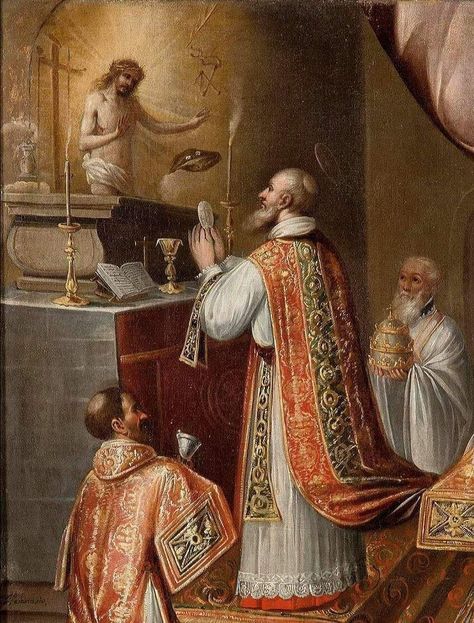

“Where there is no Mass,” writes one of the Fathers of the English Oratory, “there is also no Christianity.”
The reason is plain: Christ’s life was one of sacrifice—not merely of the figurative sacrifice of praise and prayer, but one of outward act, of suffering and of death His religion must be like Himself: it must be the continuation of the divine-human life that He led upon earth, representing and perpetuating, by some sacred rite, the sacrifice that began in the womb of Mary and ended upon the Cross of Calvary. That rite is the holy Mass. Do we always realize it as such? Does the conviction sink deep into us, when offering, or assisting, at the adorable Sacrifice, that Jesus is re enacting, in our presence, the mysteries of His life and death?
The altar of the Mass is the holy house of Nazareth, the crib of Bethlehem, the Egyptian place of exile, the hill of Calvary, the garden-tomb in which Our Saviour’s corpse reposed, and the Mount of Olives from which He ascended. The Passion, it is true, is that which is primarily represented and continued in the holy Mass; yet the prayers and rites of the Sacrifice refer, at times, to other mysteries. Thus the dropping of a part of the sacred Host into the Chalice, before the Agnus Dei, represents the reunion of Christ’s soul with His body and blood on the morning of the Resurrection. For a description of the many and beautiful analogies between the eucharistic life of Our Lord and His sacred Infancy, we refer the reader to Father Faber’s Treatise on the Blessed Sacrament.
The Mass is truly a “hidden treasure,” and, alas, our cold, dead faith allows it to remain so. If we valued it as we ought, we would hurry every morning to the church, careless of the snows of winter and the heats of summer, in order to get a share of the riches of this treasure.
The saints knew the value of one Mass: that was a dark day in their calendar on which they were deprived of the happy privilege of saying or hearing Mass. Although St. Francis de Sales was overburdened with apostolic work on the Mission of the Chablais, he made it a point never to miss his daily Mass. In order to keep his holy resolution, he had frequently to cross the river Drance, to the village of Marin, in which there was a Catholic church. It happened, in the winter of 1596, that a great freshet carried away a portion of the bridge over the stream, and the passengers were, in consequence, compelled to cross on a plank laid over those arches of the broken structure that had withstood the waters. Heavy falls of snow, followed by severe frosts, made this board very slippery, so that it became dangerous to attempt passing on it; but St. Francis was not to be deterred, for, despite the remonstrances of his friends, he made the perilous journey every morning, creeping over the icy plank on his hands and feet, thus daily risking his life rather than lose Mass.
Dear Christian reader! beg this glorious Saint to obtain for you and me some portion of his burning love for the most holy and adorable Sacrifice of the altar.
Source: “The Hidden Treasure: Holy Mass” by St Leonard Of Port Maurice, Preface by Thomas A. Nelson.
Pious Reflections of the Holy Sacrifice of the Mass
| THE PRIEST AT MASS | JESUS CHRIST |
|---|---|
| 1. ENTERS THE SANCTUARY | ENTERS THE GARDEN OF OLIVES |
| 2. BEGINS PRAYERS AT THE FOOT OF THE ALTAR | BEGINS PRAYER IN THE GARDEN |
| 3. SAYS THE CONFITEOR (“I CONFESS”) | FALLS DOWN IN AGONY, SWEATS BLOOD |
| 4. GOES TO THE EPISTLE SIDE OF THE ALTAR | IS BOUND AND AS A PRISONER IS LED TO ANNAS |
| 5. READS THE INTROIT | IS FALSELY ACCUSED BY ANNAS AND BLASPHEMED |
| 6. GOES TO THE MIDDLE OF THE ALTAR, RECITES KYRIE ELESION | IS BROUGHT TO CAIPHAS; IS DENIED THREE TIMES BY PETER |
| 7. TURNS TO THE PEOPLE AND SAYS ”DOMINUS VOBISCUM” | LOOKS AT PETER AND CONVERTS HIM |
| 8. GOES TO THE ALTAR MISSAL AND READS THE COLLECTS AND EPISTLE | IS BROUGHT TO PILATE |
| 9. GOES TO THE MIDDLE OF THE ALTAR, THEN TO THE GOSPEL SIDE | IS TAKEN TO HEROD AND MOCKED |
| 10. RETURNS TO THE MIDDLE OF THE ALTAR | IS LED BACK TO PILATE |
| OFFERTORY | |
| 11. UNCOVERS THE CHALICE | IS STRIPPED OF HIS GARMENTS |
| 12. OFFERS THE BREAD AND WINE | IS SCOURGED AT THE PILLAR |
| 13. COVERS THE CHALICE WITH THE PALL | IS CROWNED WITH THORNS |
| 14. WASHES HIS HANDS AT THE EPISTLE SIDE OF THE ALTAR | IS DECLARED INNOCENT BY PILATE |
| 15. TURNS TO THE PEOPLE AND SAYS ”ORATE FRATRES…” (”PRAY BRETHREN…”) | IS SHOWN TO THE PEOPLE BY PILATE WHO SAYS ”ECCE HOMO” (”BEHOLD THE MAN”) |
| 16. PRAYS IN A LOW VOICE, THE SECRET (PRAYER) | IS MOCKED AND SPAT UPON |
| 17. RECITES THE PREFACE AND SANCTUS- BELL IS RUNG | CHRIST IS CONDEMNED; BARABBAS IS FREED |
| CANON OF THE MASS | |
| 18. MAKES THE COMMEMORATION OF THE LIVING | CARRIES THE CROSS TO CALVARY |
| 19. BLESSES THE BREAD AND WINE WITH THE SIGN OF THE CROSS FIVE TIMES | IS NAILED TO THE CROSS |
| CONSECRATION | |
| 20. CONSECRATES THE HOST, ADORES AND ELEVATES OUR LORD | CHRIST IS RAISED ON THE CROSS |
| 21. CONSECRATES THE WINE AND ELEVATES THE CHALICE WITH THE PRECIOUS BLOOD | BLOOD OF CHRIST FLOWS FROM HIS WOUNDS |
| 22. PRAYS IN A LOW VOICE | HANGS ON THE CROSS; SEES HIS MOTHER KNEELING |
| 23. SAYS ALOUD, ”NOBIS QUOQUE PECCATORIBUS” | PRAYS FOR ALL MANKIND |
| 24. RECITES ALOUD THE ”PATER NOSTER” (”OUR FATHER”) | SPEAKS THE SEVEN LAST WORDS ON THE CROSS |
| 25. BREAKS THE SACRED HOST | DIES ON THE CROSS |
| 26. DROPS A PARTICLE OF THE HOST INTO THE CHALICE | CHRIST’S SOUL DESCENDS INTO LIMBO |
| 27. RECITES THE AGNUS DEI (”LAMB OF GOD”) | CHRIST IS ACKNOWLEDGED TO BE THE SON OF GOD BY THOSE STANDING BENEATH THE CROSS |
| COMMUNION | |
| 28. RECEIVES THE BODY AND BLOOD OF CHRIST | CHRIST’S BODY IS LAID IN THE SEPULCHER |
| 29. CLEANSES THE CHALICE | CHRIST’S BODY IS ANNOITED IN THE SEPULCHER |
| 30. PREPARES THE CHALICE ON THE ALTAR AGAIN | RISES FROM THE DEAD |
| 31. TURNS TO THE PEOPLE AND SAYS ”DOMINUS VOBISCUM” | APPEARS TO HIS MOTHER AND DISCIPLES |
| 32. READS COMMUNION AND POST COMMUNION PRAYERS | TEACHES FOR FORTY DAYS |
| 33. TURNS TO THE PEOPLE AND SAYS THE LAST ”DOMINUS VOBISCUM” | BIDS FAREWELL TO HIS DISCIPLES |
| 34. SAYS THE ”ITE MISSA EST” | COMMISSIONS THE APOSTLES TO PREACH THE GOSPEL TO ALL NATIONS; ASCENDS INTO HEAVEN |
| 35. GIVES THE BLESSING TO THE PEOPLE | SENDS THE HOLY GHOST ON PENTECOST |
| 36. READS THE LAST GOSPEL | THE GOSPEL OF THE SON OF GOD MADE MAN IS PREACHED AND WORSHIPPED THROUGHOUT THE WORLD |
| PRAYERS AFTER MASS | |
| 37. LEADS THE LEONINE PRAYERS | THE SECOND COMING OF JESUS CHRIST |

“The Holy Mass is a prayer itself, even the highest prayer that exists. It is the Sacrifice, dedicated by our Redeemer at the Cross, and repeated every day on the Altar. If you wish to hear Mass as it should be heard, you must follow with the eye, heart and mouth all that happens at the Altar. Further you must pray with the Priest the holy words said by him in the Name of Christ and which Christ says by him. You have to associate your heart with the holy feelings which are contained in these words and in this manner you ought to follow all that happens at the Altar. When acting in this way you have prayed Holy Mass.” ~ Pope Saint Pius X.
-
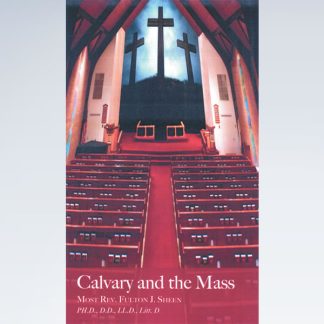 Calvary and the Mass – A Missal Companion by Archbishop Fulton SheenUS$ 10.00
Calvary and the Mass – A Missal Companion by Archbishop Fulton SheenUS$ 10.00 -
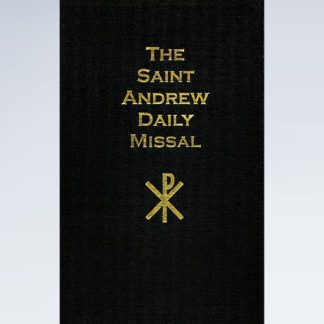 The Saint Andrew Daily Missal 1945 Edition (Gold Edges)US$ 82.00
The Saint Andrew Daily Missal 1945 Edition (Gold Edges)US$ 82.00 -
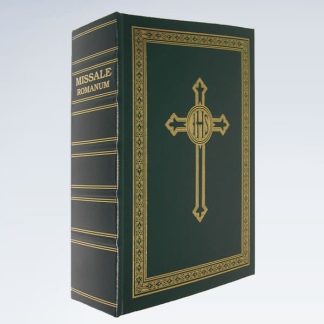 1962 Altar Missal (Missale Romanum)US$ 395.00
1962 Altar Missal (Missale Romanum)US$ 395.00 -
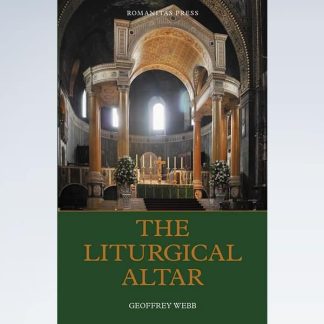 The Liturgical AltarUS$ 18.00
The Liturgical AltarUS$ 18.00 -
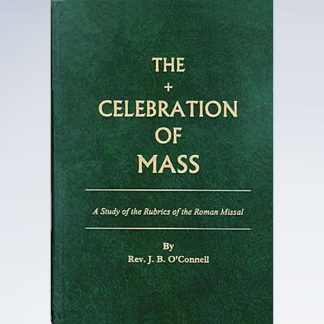 The Celebration of the Mass: A Study of the Rubrics of the Roman MissalUS$ 48.00
The Celebration of the Mass: A Study of the Rubrics of the Roman MissalUS$ 48.00 -
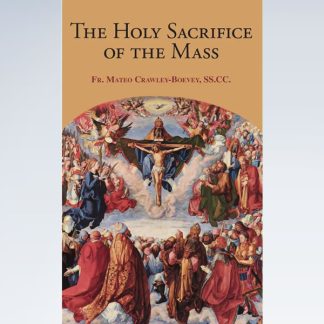 Holy Sacrifice of the Mass (Small Booklet)US$ 9.75
Holy Sacrifice of the Mass (Small Booklet)US$ 9.75
VIRGÓ SACRÁTA is a Christian mission-driven online resource and shop inspired from the beauty of Catholic faith, tradition, and arts. Our mission is to “Restore All Things to Christ!”, in continuing the legacy of Pope St. Pius X under the patronage of the Blessed Virgin Mary. “Who is she that cometh forth as the morning rising, fair as the moon, bright as the sun, terrible as an army set in battle array?” O Mary, conceived without sin, pray for us who have recourse to Thee.


